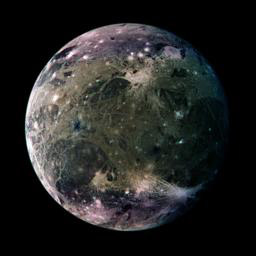This is an image of Ganymede.
NASA
Ganymede
Ganymede was first
discovered by Galileo in 1610, making it one of the
Galilean Satellites. Of the 60 moons it is the 7th closest to Jupiter. It is the largest moon in the solar system, much larger than the Earth's moon, with a diameter that is about the distance across the United States.
Ganymede is named after Jupiter's favorite cup bearer, from Roman mythology.
You might also be interested in:
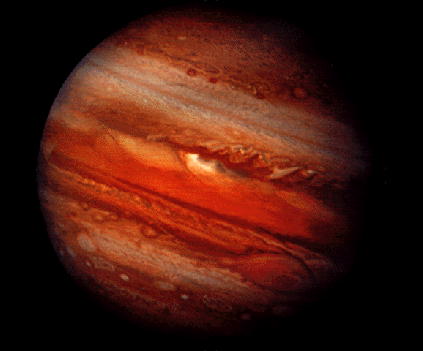
Jupiter is the biggest planet in our solar system! It's also very bright in the sky. We don't know who discovered it, but we do know the ancient Greeks named the planet after the god, Zeus. The United
...more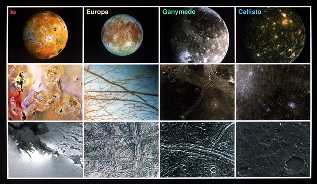
The Galilean satellites are the 4 big moons of Jupiter, Io, Europa, Ganymede, and Callisto. These moons are called Galilean because they were discovered by Galileo Galilei in 1610. In this picture, Io,
...more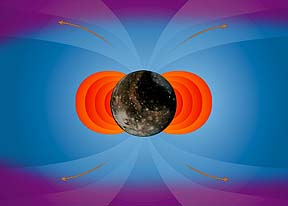
Did you know that some of the planets and moons can be magnetic? Earth is! The Galileo spacecraft found out that a moon of Jupiter, Ganymede, is magnetic too!
...more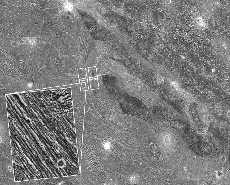
There has been no icy volcanism on Ganymede, nor continental drift, but it does seem that there have been movements of the surface. Examination of the surface of Ganymede reveals many kinds of faulting.
...more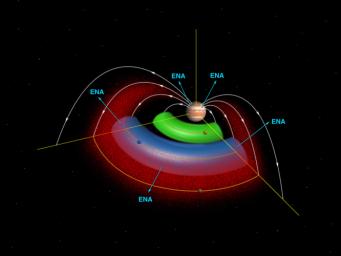
The Galileo mission discovered an amazing thing! Europa has its own atmosphere, although it is very, very thin. When fast moving molecules traveling through space near Jupiter hit Europa's atmosphere,
...more
Galileo was a spacecraft that orbited Jupiter for eight years. It made many discoveries about Jupiter and its moons. Galileo was launched in 1989, and reached Jupiter in 1995. The spacecraft had two parts.
...more
Amalthea was discovered by E Barnard in 1872. Of the 17 moons it is the 3rd closest to Jupiter. Amalthea is about the size of a county or small state. Amalthea is named after the goat in Greek mythology
...more
